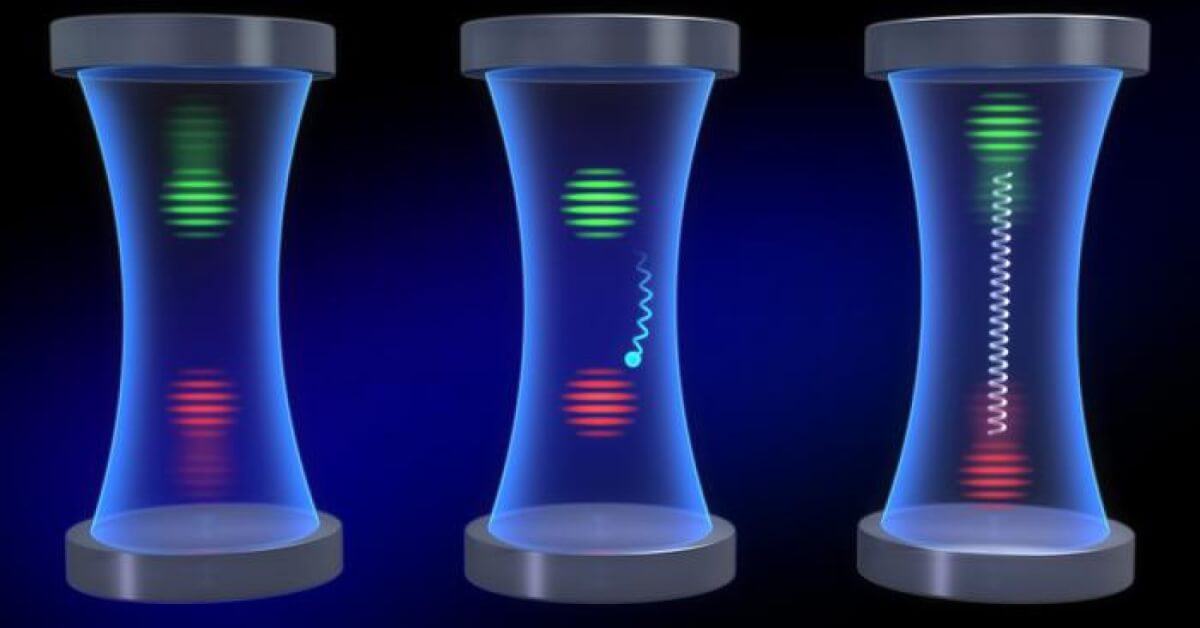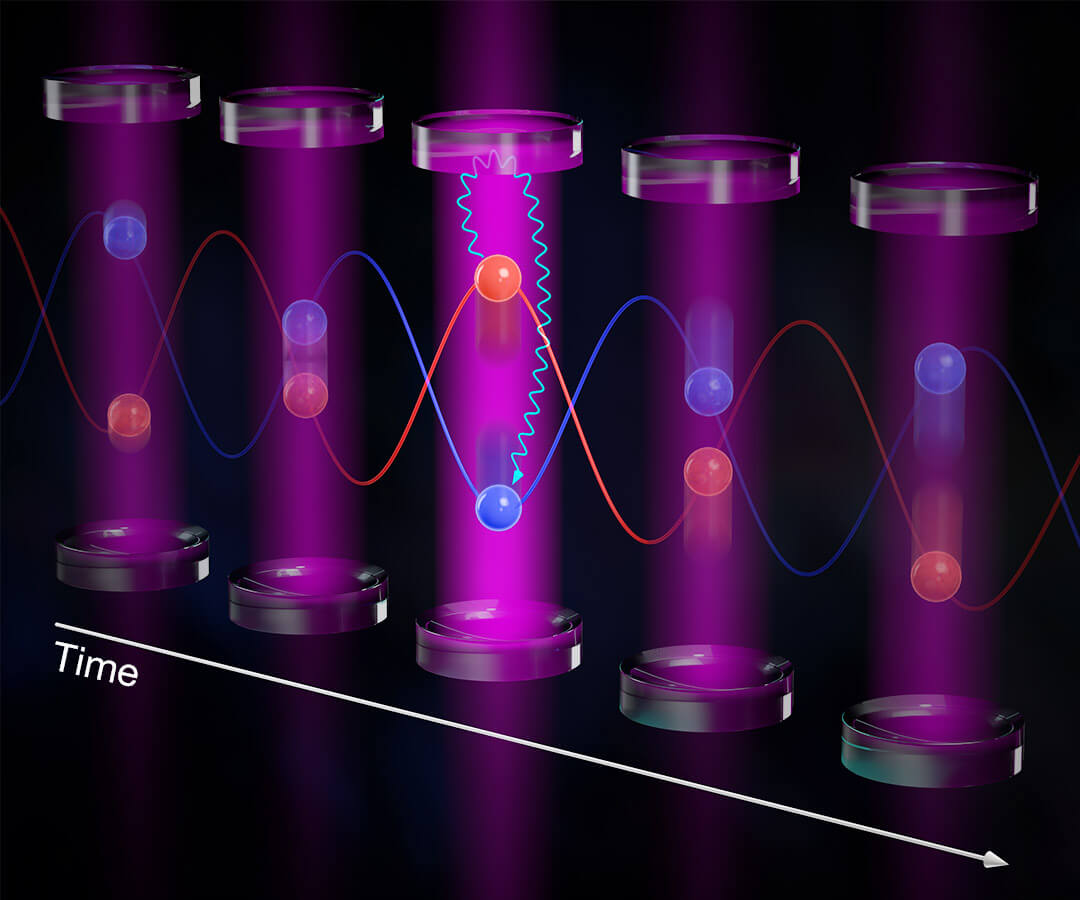
Atoms inside of an optical cavity exchange their momentum states by "playing catch" with photons. As the atoms absorb photons from an applied laser, the whole cloud of atoms recoil rather than the individual atoms. (CREDIT: Steven Burrows/Rey, Thompson, and Holland Groups)
BOULDER, Colo. — Physicists have discovered a new way to make atoms march in lockstep, bound together by the power of light. This research, conducted by a team led by James K. Thompson at JILA in Boulder, Colorado, could open the door to exciting advances in quantum technologies like ultra-precise sensors and powerful quantum computers.
To understand the significance of this work, first imagine a game of atomic billiards. In the quantum realm, atoms behave both like particles and waves, spreading out and overlapping like ripples in a pond. When you strike two billiard balls, they fly apart, never to meet again. But what if, right after striking them, you could glue those balls together with an invisible spring? Though they still sail across the table, they’d be connected, eventually pulling each other back. That’s essentially what the JILA team accomplished with atoms.
In their study, published in the journal Science, the researchers cooled a cloud of rubidium atoms to just a hair above absolute zero. At these frigid temperatures, the atoms quiet down, and their quantum wave properties take center stage. Using lasers, the team set the atoms’ waves oscillating, splitting each atom into a superposition of two different momentum states – like two waves rippling in opposite directions.
Normally, these atomic waves would spread out and disperse, but that’s where the “atomic glue” comes in. The key was a specially engineered vacuum chamber, an optical cavity lined with exquisitely reflective mirrors. By shining a “dressing laser” into this cavity while the atoms danced inside, the team created a sort of quantum trampoline light bouncing back and forth between the mirrors and interacting with the atoms over and over again.
Here’s where the magic happens: when one atomic wave emits a photon, it gets a kick in one direction. But because of the cavity, that photon is much more likely to be absorbed by another atom, imparting an opposite kick. This light-mediated game of hot potato binds the atoms’ motion. The end result is that atoms with opposite momenta are constantly interchanging, leading to a sort of quantum square dance.

The implications of atoms moving in lockstep could be enormous. In conventional atomic sensors, like the ones that guide GPS satellites and detect underground resources, the precision is limited by the fact that the atoms eventually drift apart.
The researchers explain that it’s like trying to measure the average height of a class of students by having them stand on each other’s shoulders. If they start wobbling and moving independently, your measurement will be way off. However, if those students (the atoms in this analogy) are bound together, they move as one cohesive unit, dramatically reducing uncertainty and enabling much more precise measurements. The JILA team demonstrated that their “atomic glue” can hold the atoms together 10 times longer than usual.
The researchers also uncovered a surprising quantum behavior: the bound atoms exhibited a phenomenon known as “quantum many-body scarring.” Typically, when many quantum particles interact, their waves get tangled up in mind-bogglingly complex ways, like a bowl of spaghetti. But in certain rare cases, the particles snap into simple, predictable patterns – the quantum equivalent of the spaghetti noodles all lining up in parallel.
This well-ordered behavior, akin to a laser beam cutting through fog, could provide a means to generate robust, error-resistant quantum bits, or qubits – the building blocks of quantum computers. While current qubits are extremely delicate, qubits based on “scarred” atomic waves could maintain their coherence much longer, a crucial step towards practical quantum computing.
Finally, the JILA work provides a tantalizing tool to explore exotic states of matter. The “atomic springs” are mathematically equivalent to the interactions between electrons in superconductors and other quantum materials. By tuning their atomic system, the researchers can simulate these complex materials, potentially identifying new paths to room-temperature superconductivity and other elusive quantum treasures.
As the team pursues these leads, one thing is certain: in the strange and wonderful world of quantum physics, a little atomic teamwork can go a long, long way. With atoms marching to the beat of the same quantum drum, the future of quantum technology is looking brighter than ever.
Article reviewed by StudyFinds Editor-in-Chief Steve Fink.










